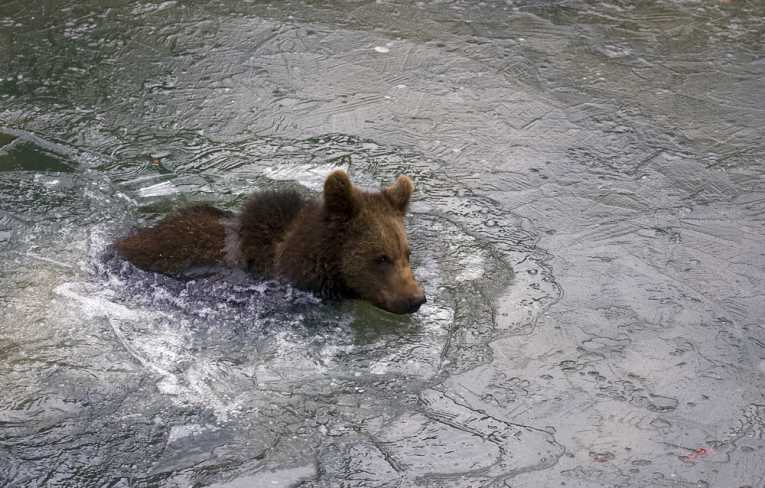In Alaska, the bears and the humans have to learn fast. While primates and other animals have been shown using tools, just like humans, bears have missed out on this activity, or so we thought.
This young brown bear below (Ursus arctos) was minding its own business on the beach. It used barnacle-encrusted rocks to rub its neck and muzzle. The tool-using was implied by the manipulation of the rocks in the paw so that the barnacles faced in the appropriate direction, giving that refreshing scrub effect we all know so well!
Removing waste food or relieving an itch, it doesn't matter for now. The first time a bear has been observed using a tool was at its toilet. A young bear should not be so. The difference between normal rubbing against a tree or rock and looking for food while foraging is distinct, if not very distinct.
It's the manipulation in ever such a careful way that indicates the full set of motor abilities to turn this tool into even more uses. With the largest brain/body size ratio of any carnivore, bears have been seen as intelligent for generations. Other object manipulations need to be more carefully observed so that we can further classify tool uses in the bear and investigate various species for habits that could be construed as "culturally evolving."

Put away your carpentry set, a tool-using brown bear; Credit: © Volker B. Deecke
Perhaps in the future, we may see the dog replaced by the more cultured bear as our favoured companion, and if that seems far-fetched, remember there was once a theory that we evolved from bears. Some Italian luminary had the idea, though whether he had studied anatomy or, in fact, anything at all before making up the idea is debatable!
The full research paper associated with the discovery has been published in the journal Animal Cognition.










